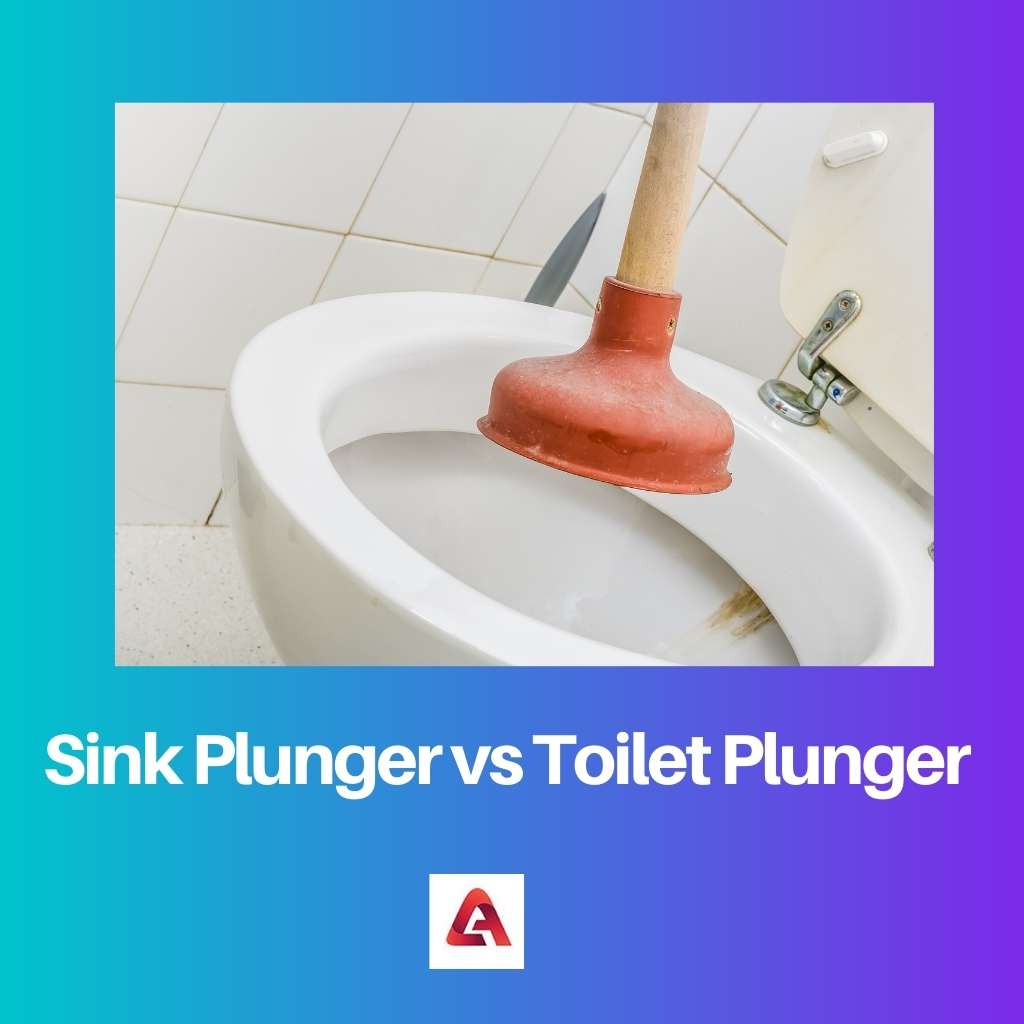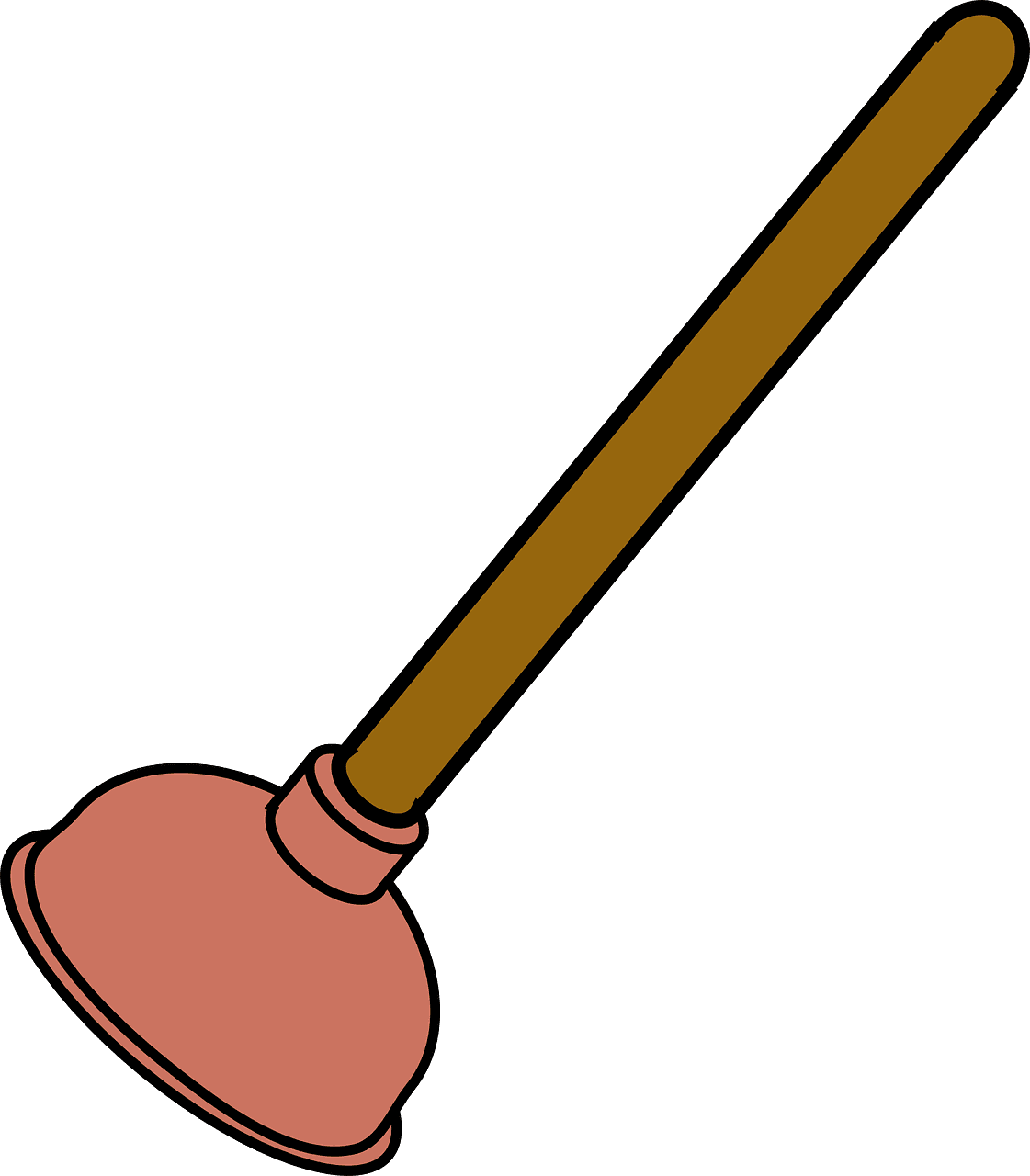The common problem with drains is that they get clogged quite often. To unclog the drain through a DIY process would require a plunger.
Depending upon the type and area of usage, plungers can be divided into sink plungers or toilet plungers. Both types of plungers have different features.
Key Takeaways
- Sink plungers have a flat cup shape, while toilet plungers have a bellows shape.
- Sink plungers are used for unclogging sinks and tubs, while toilet plungers are used for unclogging toilets.
- Toilet plungers are larger and more heavy-duty than sink plungers.
Sink Plunger vs Toilet Plunger
The difference between the sink plunger and the toilet plunger is that the sink plunger has a flat end, while the toilet plunger does not have a flat back and has an extension. There is a soft rubber flap folded inside the cup,, known as a flange, in toilet plungers.

The surface of sink plungers is flat so that it can form a seal on the flat surface of the sink during the suction process.
Sink plungers are ideal for uncloggingnk in the basement, bathroom, or kitsink chen and shower drains and bathtub. The height of the sink plunger is shorter and smaller.
On the other hand, the flange’s function in the toilet plunger cup is to seal the end of a drain pipe. This sealing mechanism helps in applying force to the blockage more efficiently.
Toilet plungers are ideal for unclogging toilet bowls and tub drains. The height of the toilet plunger is more prolonged and taller.
Comparison Table
| Parameters of Comparison | Sink Plunger | Toilet Plunger |
|---|---|---|
| Area of application | For sink in basement, bathroom or kitchen and shower drains and bathtub | For toilet bowl and tub drains |
| Presence of flange | Flange is absent in sink plunger | Flange is present in toilet plunger |
| Handle | Straight | Straight or curved |
| Other names | Cup plunger | Flange plunger |
| Height | Shorter | Taller |
What is Sink Plunger?
Sink plungers are not equipped with any solid rubber piece inside the plunger cup, known as the flange.
The surface of sink plungers is flat so that it can form a seal on the flat surface of the sink during the suction process. The sink plunger is very flexible,, so they can work for various shapes and sizes of sinks.
Sink plungers are more effective in unclogging drains than wire hangers or snakes that many people use.
The user manual for sink plungers is first to block the opening of the overflow. The sink plunger should form a complete seal at the hole. A small wet rag can also be stuffed at the end of the hole.
Then the plunger is placed over the train, and water is run till the plunger cup gets completely covered, after which the plunger is pumped up and down several times.
The mechanism of pumping the plunger numerous times is that when the plunger is pressed down, the compressed air helps push the blockage downward.
And when the plunger is pulled up, the sanction pulls the blockage back. This constant back-and-forth movement helps in wiggling the clog-free.
After several thrusts, if the drain allows water after lifting the plunger, then the drain is successfully unclogged.
However, if it doesn’t drain entirely,, the same process should be repeated at least four to five times.

What is Toilet Plunger?
Toilet plungers have a solid rubber piece attached to the plunger cup. The rubber piece inside the plunger is known as the flange. The flange in toilet plungers is available in different shapes.
The function of the flange in the toilet plunger is to seal the end of a drain pipe. This sealing mechanism helps in applying force to the blockage more efficiently.
The flap of the toilet plunger fits well over the drains of the toilet and creates a strong suction force. If the flange is not present in the toilet plunger, then there would be a splash of dirty water everywhere with every thrust.
Also, the blockage will not be removed effectively, and the drain pipe may clog again soon. After using a plunger, it is advised to run hot water so that the remaining blockage is flushed out.
A toilet plunger should have a handle that is either made of plastic or metal. Various toilet plungers are available that have a hold of wood and feel nice while gripping the plunger.
However, wood can become a surface to promote the growth of bacteria and allow it to gather and survive.
Toilet plungers should be kept and stored in drip trays. Drip trays are the plastic bases that help the plunger drip the soiled oil and allow air circulation to quickly dry the toilet plunger. The toilet plunger is also known as the flange plunger.

Main Differences Between Sink Plunger and Toilet Plunger
- The handle of the sink plunger is made of wood, while the handle of the toilet plunger is made of plastic or metal.
- The sink plunger has a flat end, while the toilet plunger does not have a flat end and has an extension.
- A sink plunger can be used for flat surfaces, while a toilet plunger can be used in holes and drains.
- A sink plunger is inexpensive while a toilet plunger is comparatively more expensive.
- A sink plunger is also known as a cup plunger, while a toilet plunger is a flange plunger.

To be honest, I never knew there were different types of plungers. It makes sense now why my plunger didn’t work in my sink, I’ve been using the wrong one for a long time.
Yes, it’s great to know these things. And now we also know what plunger to use for each situation.
I was also surprised by this information. I’m glad I came across this article.
I have read the article and I see no need for it. I don’t even have a plunger in my house nor do I plan to buy one. Plumbers are here for a reason.
I do agree with you on this one. I also prefer to call a professional, no one can fix things better than a licensed plumber.
A very dry subject, but quite helpful. We never really realize the importance of certain things until we need them. Good to know the differences between the two plungers.
I agree, who knew there was so much to learn about plungers. Quite informative.
Very interesting read, this topic is difficult and knowledgeable. The comparison makes everything clearer and understandable, I will look forward to using a sink plunger next time I have any drain issues.
Absolutely, a very informative article. Excellent tips for the use of plungers.
Yes, I had the same thought. Now I know the right plunger to use in each situation.
The information is too technical for such a simple tool to use. I think the article is over-explaining things.
I would have to agree with you, this is a little too much information.
I also feel like the article went into too much detail. A brief explanation would have been sufficient.
Thanks for this, now I know why I need a new plunger. I also know how to properly use it for my clogged sink.
Absolutely, the correct knowledge is crucial. I’ve also learned something from this article.
Yes, this was a good read. I will also keep this in mind when purchasing the right plunger.